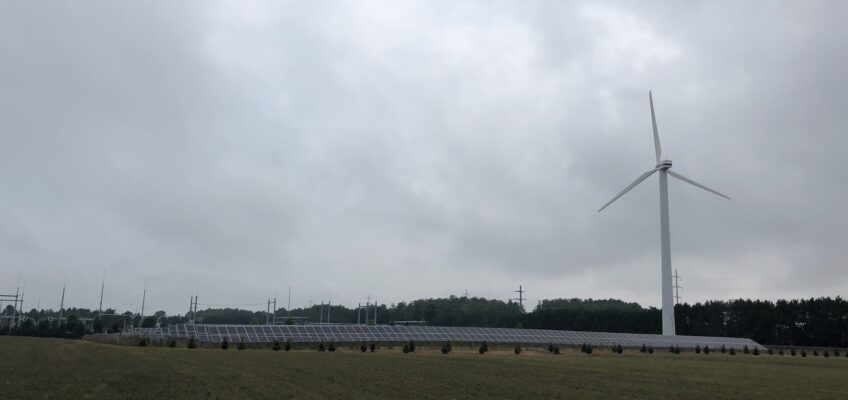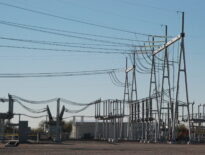Today the Institute for Local Self-Reliance was joined by joined by 24 utility justice, consumer advocate, and environmental organizations in submitting comments urging the Energy Information Administration to incorporate interconnection and utility shutoffs data. The agency reports on information collected from electric distribution utilities across the United States, and the lack of standardized reporting allows utilities to use their market power against competitors and to cut off millions of Americans from an essential service each year.
The slightly-edited text of ILSR’s comments is below:
The Institute for Local Self-Reliance (ILSR) is a national nonprofit organization focused on providing community members with the research and advocacy tools they need to reclaim power over local decision making and hold corporations and government accountable. Our Energy Democracy Initiative focuses on electricity markets and ensuring that the rules of the system align with providing customers the most cost-effective and reliable energy that meets community needs.
The research of ILSR and others has identified that distributed renewable energy assets can provide the most cost-effective source of renewable electricity generation. Because these assets do not require utility ownership, they have developed in competitive markets across all fifty states. However, state regulators have often failed to keep pace with policing markets effectively, often stymied by a lack of complete and comparative data on their regulated utilities’ performance at managing this market. Data is essential to monitoring how state clean energy laws and policies are being implemented, but states vary widely in terms of the data they require (if any at all) utilities to report.
Such data –– interconnection timelines and costs, and details of interconnection queues –– is essential. Voluntary disclosure of interconnection data to the National Renewable Energy Laboratory Solar Trace database shows wide variation in interconnection timelines across utilities within a single state, with as much as 50 business days separating the median pre-operation processing times for different utilities. Variations between states are similarly large, but the dataset is incomplete. For utilities in one-third of states, there is no data at all.[1]
In a national survey of solar developers published last year, respondents to ILSR’s survey cited interconnection rules and interconnection costs as the two most common sources of delays and unexpected project costs.[2] Eighty-five percent of respondents reported unexpected delays and/or costs as a result of utility noncompliance with state interconnection policies. Over one-third of respondents said that utility delays in the interconnection process lasted longer than three months.
Availability and scrutiny of interconnection data is crucial due to the inherent conflict of interest of electric distribution companies. Almost universally, these companies provide service under a government monopoly grant and in many cases these utilities have competing interests in profit from power generation and infrastructure that compete with third party interconnected resources.
Only the Energy Information Administration can provide regulators with a complete picture. Because state regulators are limited to requiring data disclosure to utilities within their state purview, the Energy Information Administration is the only potential source of national and standardized data to evaluate distributed energy market performance.
The importance of consistent data is amplified by the passage of the federal Inflation Reduction Act. The Institute for Local Self-Reliance estimates that its provisions may result in installation of sufficient distribution-connected solar (and energy storage) to serve 10 to 15 million households, 50 to 75 gigawatts of new capacity. State regulators need data to effectively compare interconnection practices and experiences across different jurisdictions and identify where new policies are needed to streamline connections to the distribution grid.
Additionally, ILSR supports collection of data about utility shutoffs for any customer whose electricity is shut off, not just customers on assistance programs. During the first year of the pandemic, utilities required to report the data shut off power to households more than 3.5 million times.[3] Each shut off interrupted the possibility for remote school or remote work, as well as access to basic needs like refrigeration, heating and cooling, etc. Approximately one-third of utilities have reporting requirements, but the vast majority do not. Federal and state regulators need to know the breadth of harm perpetuated by utility shutoffs and which utilities are more effective at avoiding them, to identify ways to minimize the harm to households that cannot afford their electricity bills.
Data Requests
We request that the Energy Information Administration collect the following data from electric distribution companies, as requested by the Solar and Storage Industries Institute, to support state and federal oversight of electricity markets that rely on distribution service including interconnection:
- Survey data regarding interconnection timelines and interconnection costs for distribution-connected, individual projects.
- The collection of data about interconnection queues, through which utilities mediate market access of their competitors.
We also request that EIA collect the following data from electric distribution companies regarding electricity shutoffs to better inform policy development by legislators and regulators in all fifty states. We request all data be collected by month and include the service provider name, customer class, service type (i.e., gas, electric, heating oil), municipality, and zip code:
- Rates for electricity and heating services;
- The average and median dollar amount billed to customer accounts;
- The total number of:
- Final termination notices sent due to bill non-payment;
- Service disconnections due to bill non-payment,
- Service reconnections of customers disconnected for bill non-payment and average amount of time between service disconnection (due to non-payment) and service reconnection;
- Customers with arrearages greater than 30 days at the end of each month, and total dollar amount owed, and average amount owed per customer;
- The number of customers enrolled in deferred payment agreements;
- The methods and contents of general communications by utilities to customers concerning their rights and available assistance programs if customers are unable to pay their bills in full.
We recognize that these data requests may pose an additional reporting burden on electric distribution companies. However, unlike their competitors seeking access to the distribution system, these companies have access to a captive customer base upon which to recover the costs of compliance. Utility customers currently bear the burden of any utility delays during the interconnection process, and adding greater transparency to help policymakers identify and address those delays could help to justify any additional reporting burden.
[1] Kienbaum, Katie. Are Utilities Blocking Rooftop Solar From the Power Grid? (ILSR, 9/9/22). https://ilsr.org/are-utilities-blocking-rooftop-solar-from-the-power-grid/
[2] https://ilsr.org/2021-local-solar-developer-survey-report/
[3] https://biologicaldiversity.org/w/news/press-releases/report-electric-utilities-shut-off-power-36-million-times-while-increasing-payouts-to-shareholders-executives-2022-05-02/





